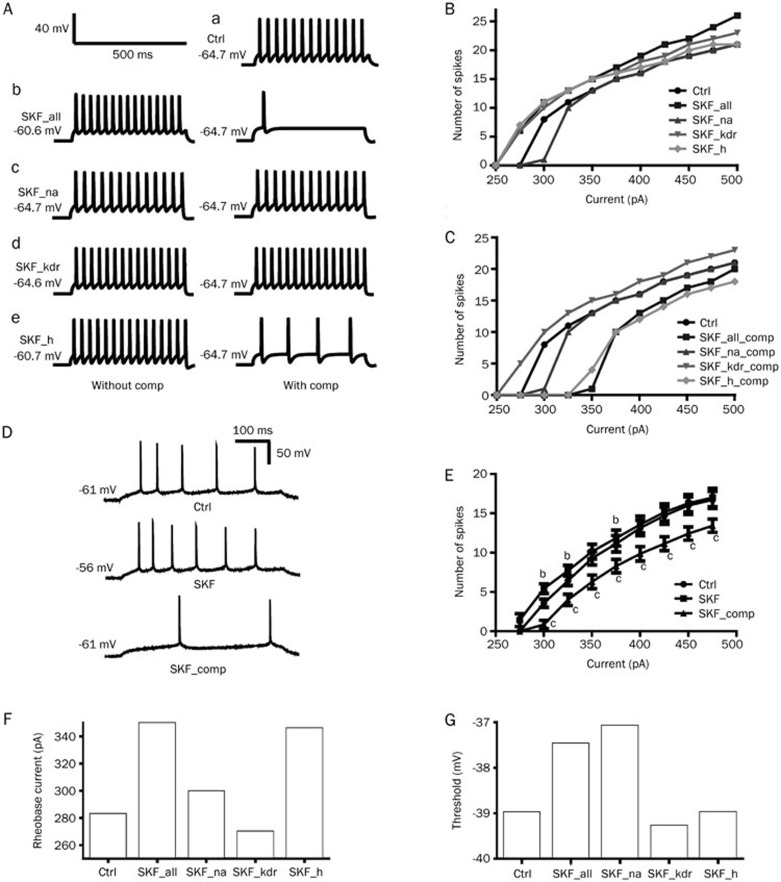Figure 4.
Effects of SKF83959 on excitability of the soma in the hippocampal pyramidal neuron in simulations and experiments. Soma excitability was measured by direct injection of a series of currents of different amplitudes at the soma. (A) In simulations, example traces show the voltage responses recorded at the soma in control and SKF83959 treated cells while modifying all three channels or one channel type alone with (right) or without (left) membrane potential compensation (all traces were obtained by injecting a current of 350 pA for 500 ms), as described in the methods. Spike numbers were detected under a series of current stimuli from 250 pA to 500 pA with steps of 25 pA with (C) or without (B) membrane potential compensation in simulations. (D) Example traces from experiments show the voltage responses recorded at the soma in control and SKF83959 (50 μmol/L) treated cells during 75 pA current injection. (E) In experiments, spike numbers were detected under a series of current stimuli, from 25 pA to 225 pA, with steps of 25 pA and with or without membrane potential compensation (n=7). Rheobase current (F) and spike threshold (G) were examined as described in the methods using our mathematical neuronal model. Ctrl, control; SKF_all, modifying all three channels; SKF_na, modifying the Na+ channel alone; SKF_kdr, modifying the kdr channel alone; SKF_h, modifying the HCN channel alone. SKF_all_comp, SKF_na_comp, SKF_kdr_comp and SKF_h_comp were the same as SKF_all, SKF_na, SKF_kdr, and SKF_h, except that the membrane potential was compensated to the control level; SKF, SKF83959 (50 μmol/L) treatment without membrane compensation; SKF_comp, SKF83959 (50 μmol/L) treatment with membrane potential compensation. bP<0.05, cP<0.01 vs control, paired t-test.

